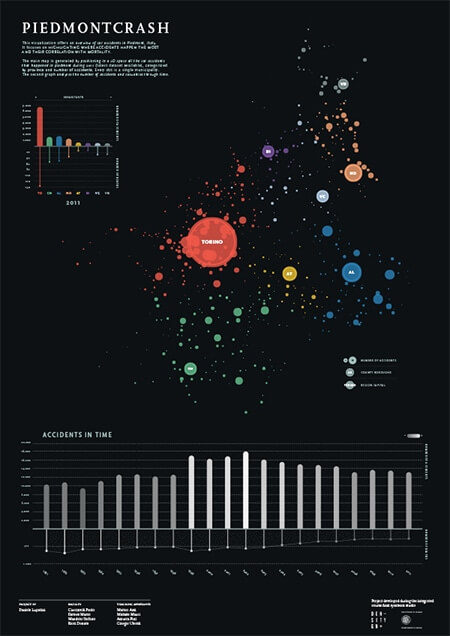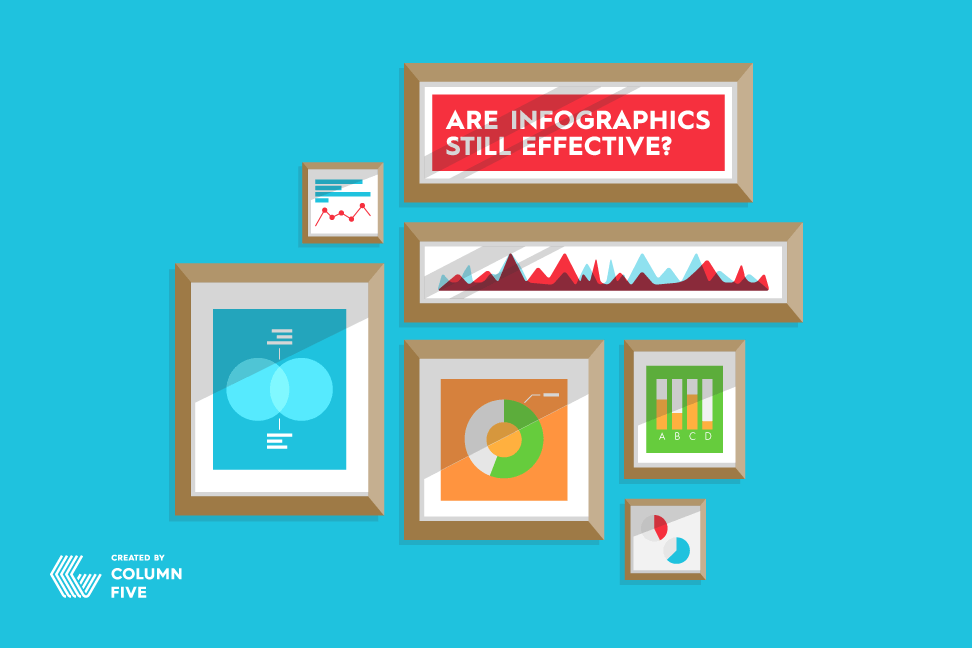(This post originally appeared on Forbes.)
Undoubtedly, infographics are having quite a run. When we first started working with brands to create them in 2008, very few were familiar with the term. Now, although infographics are not yet common dinner conversation, you could likely find at least one person at a cocktail party with an affinity for them. But even those familiar with this ever-growing medium are beginning to wonder: Are infographics still an effective part of a content strategy?

As with anything experiencing rapid growth in popularity and ubiquity, infographics have become a polarizing force. Everyone has an opinion. The old guard of information visualization—Yale professor Edward Tufte and business intelligence author Stephen Few—abhors their frequent data visualization abuses and excessive inclusion of unnecessary design elements. Rand Fishkin of Moz seems to hate them whole but encourages their use in bite-size pieces.
Meanwhile, progressive publications, such as Fast Co. and Mashable, have embraced the medium, some dedicating regular features to its honor. Even major brands, such as GE, have utilized the medium, creating an entire platform dedicated to infographics at Visualizing.org. Others go as far as to tout the magical powers of these visual devices.
Depending on whom you listen to, infographics are either a parasite that is slowly killing modern media or a well-timed blood transfusion for an anemic industry. In reality, both perceptions are shortsighted.
Infographics are simply using graphic design to visualize content that has long existed in other forms. While not appropriate or useful for all types of content, infographics can add valuable context to existing stories by using visuals to show relationships in data, anatomy, hierarchy, chronology, and geography. The written word simply does not afford us immediate clarity in these areas.

At the forefront of this debate is the question of whether novelty is the sole driver of the rise of infographics or if there is, in fact, an inherent utility to the medium. Certainly, novelty has played a large role in the growth of this trend over the past few years.
While infographics are nothing new, their successful use as a differentiator in brand publishing has been unlike anything that came before on the web. While these new iterations have commonly taken a slightly different form than infographics of the past, the potential for similar display of information remains.
But, if the novelty is wearing off, what are we left with?
Just a format that is as useful and versatile for communicating information visually as any other.
So, if infographics are now just another format of visual content, what’s next?
More combinations of the same building blocks that make up infographics and every other medium we use to communicate information on the web: text; images (photos, illustrations, and graphics); audio; motion (video and animation); and interactive content.

Should you be using animated .gifs?
3D infographics?
Cats with GoPros?
Internet you can eat?
Those are fun and their novelty can be temporarily beneficial, but they are not what makes content good. Sound research, interesting information, insightful analysis, timeliness, humor, and emotion—these are the materials that make for great content. The format is far less relevant.
We need to stop asking if infographics “work,” as though they are a magic balm to be applied to a brand’s communication strategy. When your content is compelling, design can and should be used to communicate this information along with your audio, written, interactive, and video content.
Without compelling content, you are left chasing novelty from one trend to another. While this can be effective from time to time, it is ultimately a losing battle. Brands and marketers should stop talking about what’s next, and focus instead on what makes all content good. The result, regardless of format, will provide value long after the buzz has worn off.





